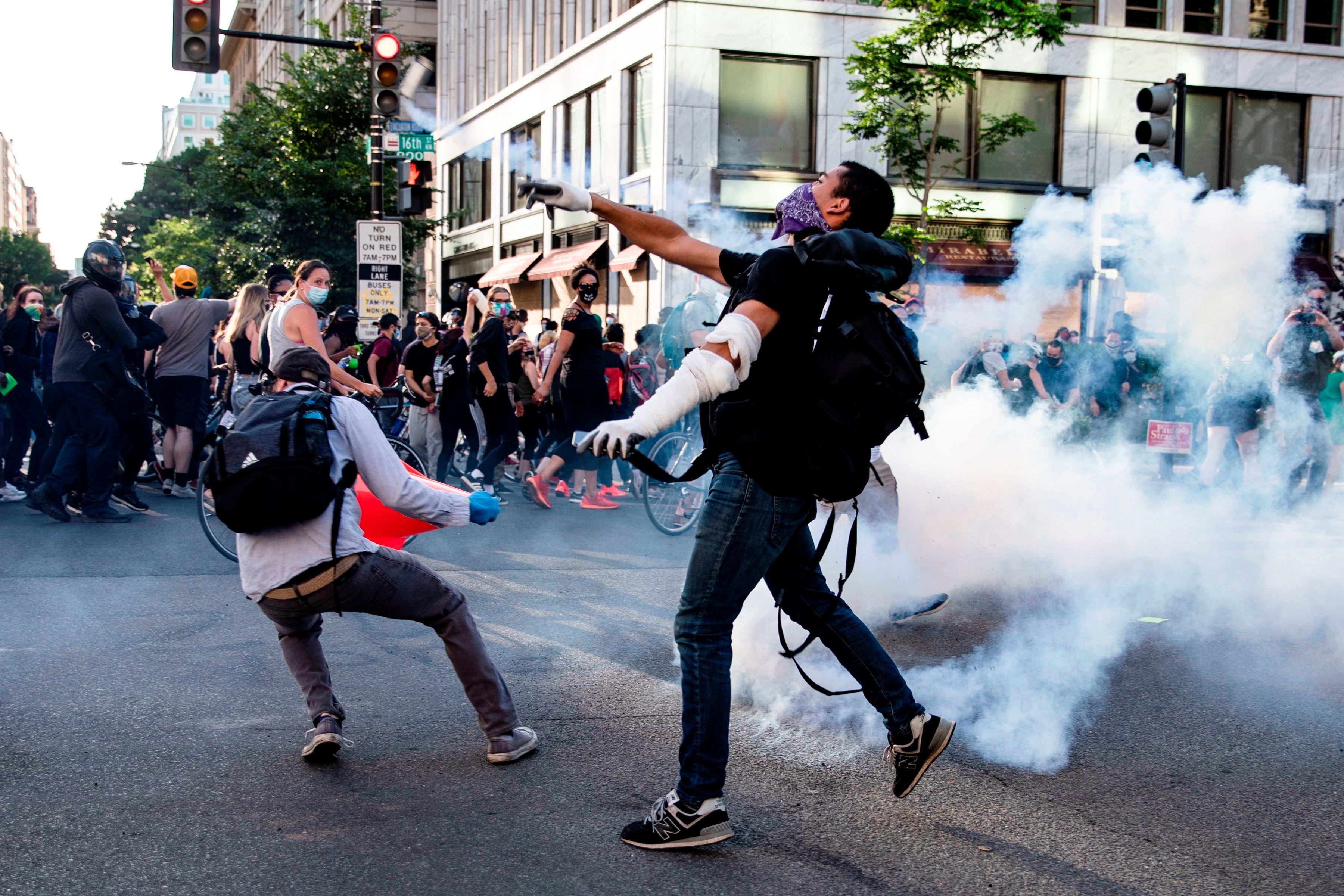Elizabeth Garcia, a 24-year-old girl, did not leave her house for several months to avoid exposing herself to the coronavirus, but the murder of George Floyd at the hands of the Minnesota police shocked her so much that it led her to participate in the protests in Los Angeles to demand that police brutality stop.
"I was very distressed not to know if I should go out or not. But it is also my duty to demand justice for African American people.”Says Elizabeth who participated in the March 30 march in Los Angeles.
In the northern California city of Stockton, Governor Gavin Newsom warned this week that the protests could cause, in a few days, a resurgence in the number of coronavirus cases.
"If you are not concerned, you are not paying attention to the epidemiology and virulence of this disease," he said.

The massive demonstrations to condemn Floyd's death have been almost day after day throughout California. At the same time, until June 3 the pandemic did not subside. The State Department of Health reported 119,807 coronavirus cases with 4,422 deaths.
Elizabeth, who lives in the city of Baldwin Park in Los Angeles County with her parents, three brothers and a nephew, admits that she was afraid to go to the march for a possible contagion, but when she saw so many people in solidarity protesting, she felt safe.
"I tried to avoid physical contact and not touch others. I was wearing my mask and my antibacterial gel"
And as much as he could, he took the necessary precautions not to get it. “I was like five hours on the march, but I tried to be responsible and I didn't go home with my family. I'm staying with some friends who also went, "he says.
And four days after participating in the march, on Thursday, June 4, he was tested for the coronavirus. "The results will take about four days to be ready."
She says that if she is negative, she will return home with her parents. However, he is in a great dilemma because he wants to participate every week in the marches against police violence. “It's getting difficult for me. I don't want to expose myself or my family, but it is my duty to fight for justice. ”
Los Angeles County Director of Public Health Barbara Ferrer says they support residents' need to stand up against racism and violence, and join the many voices expressing anger and frustration at the murder of George Floyd at the hands of police.
But notice that There's no way to keep the six-foot social distance in a tumultuous rally where people stand side by side.

Despite this, to those who decide to attend these demonstrations, he recommends using masks that protect their nose and mouth, and make sure that those around them also bring them.
"It is very important that after participating in these marches, they are quarantined for 14 days, and tests are made to see if they did not contract the disease ”.
But he clarifies that they should not be tested immediately after participating in a protest. Better wait a few days because COVID-19 has a long incubation period, he says.
And even if they test negative after being exposed, it doesn't mean they can't get infected later.
It also advises that if the protester was exposed, and lives with the elderly or with pre-existing health conditions, they should keep a distance of six feet and wear a mask when they are with them at home; as well as avoiding preparing food for others, sharing utensils, towels, bedding and increasing the cleaning and disinfection of common surfaces.
Experts such as University of California Professor of Medicine and Infectious Diseases Peter Chin-Hong have said that using gases to suppress protesters could spread the coronavirus, because it causes them to cough, scream, and consequently infect other people with the dew or saliva droplets scattered.








